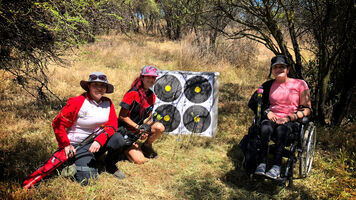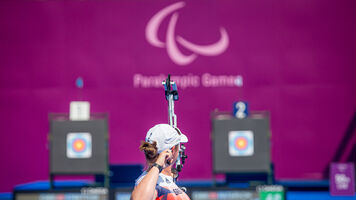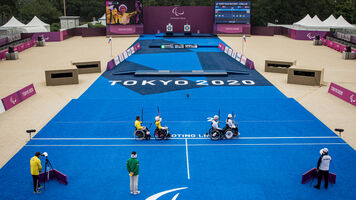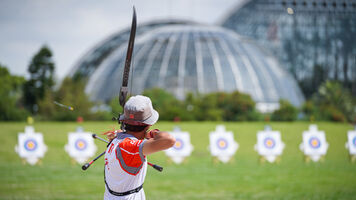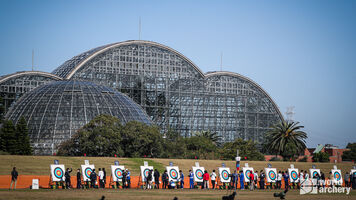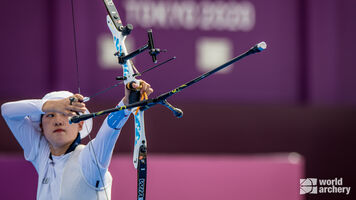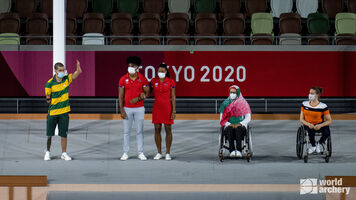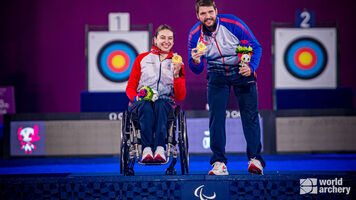The archery schedule at the Tokyo 2020 Olympic Games explained
The archery competitions at the Tokyo 2020 Olympic Games start on 23 July and last nine days.
The event itself, however, begins a few days earlier. Athletes will arrive in Tokyo on 19 July, the practice field officially opens one day before that and there are a few other pre-tournament training sessions on the schedule.
The Olympics, while of paramount importance, are not actually very large in size for an archery competition.
Just 128 athletes, 64 men and 64 women, participate.
It is still longer than most international archery events, because every single match takes place in the arena – even the earliest rounds, which run side-by-side at stages of the Hyundai Archery World Cup and various world championships.
It’s all part of the spectacle of the Games. A celebration of the sport that, for archers in Tokyo, will last about two weeks.
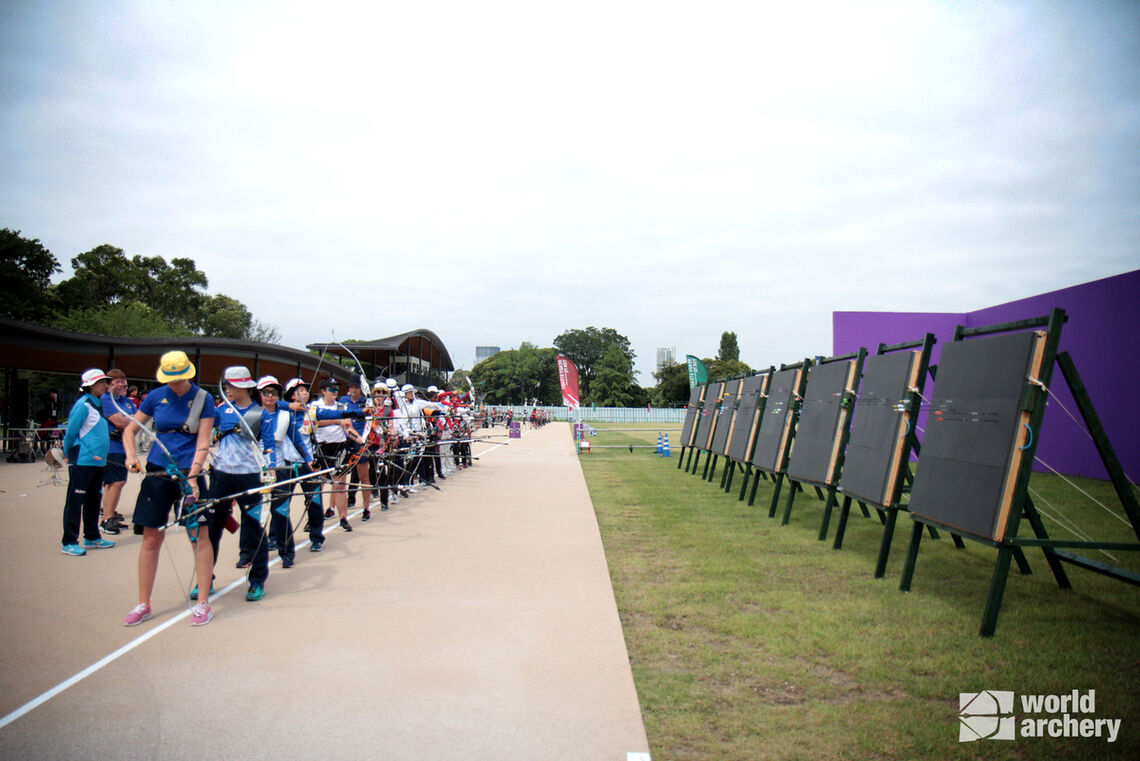
Arrival
- Date: Until 19 July
Teams will be travelling to Japan over the next few days, some to organised holding camps (although many of these were cancelled because of the pandemic) and others directly to the athlete village.
Everybody who arrives for the Games is subject to a rigorous health assessment programme pre-travel and on arrival, meaning this process takes a little longer than normal.
Open training begins for all teams on 18 July.
The practice field, which is the one that is also used for the ranking round, is available for all teams throughout the day – unless things get too busy and a schedule needs to be put in place.
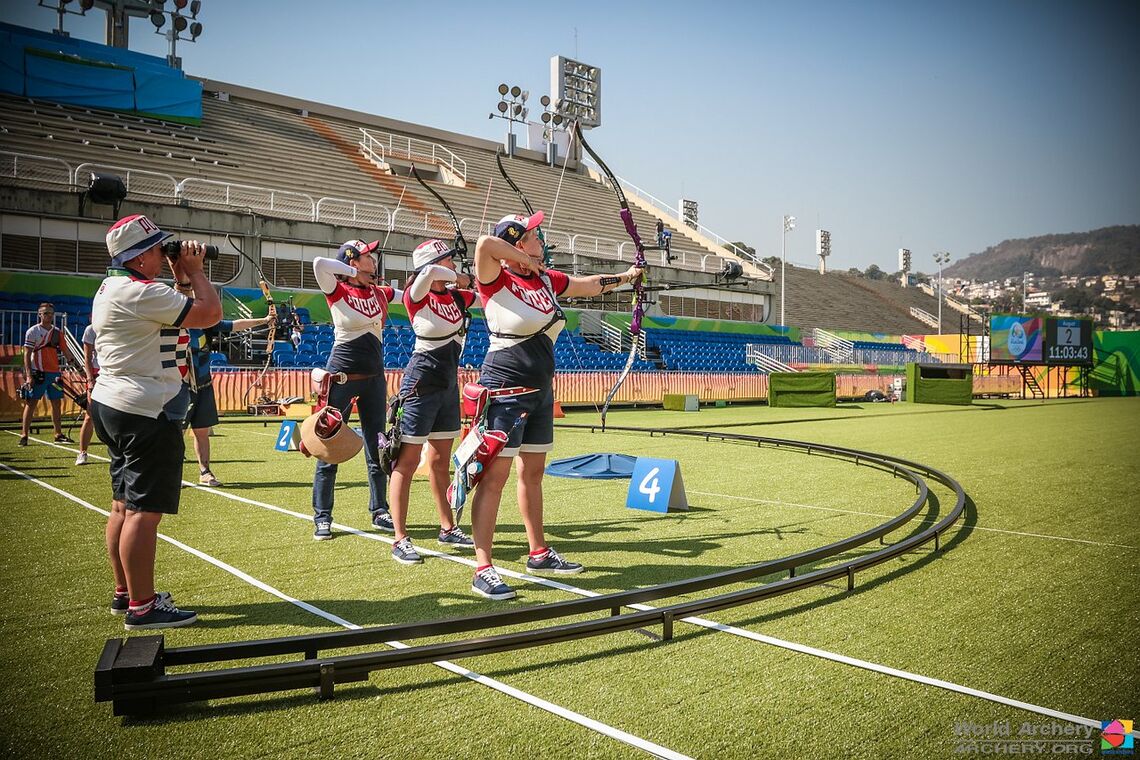
Familiarisation
- Dates: 20-21 July
Few archery tournaments feature familiarisation sessions, and it’s usually only major multisport events, where every match is run one-by-one, and the Hyundai Archery World Cup Final.
Familiarisation is a slot in which every athlete has an opportunity to shoot in the arena. Teams enter together, and each archer gets about 30 minutes on the stage.
There are no runners, as there are during matches, so athletes do have to walk to the target and collect their own arrows.
The draw for qualifying takes place after the first day of familiarisation. This is when archers find out who they‘ll shoot with and next to during the qualifying round.
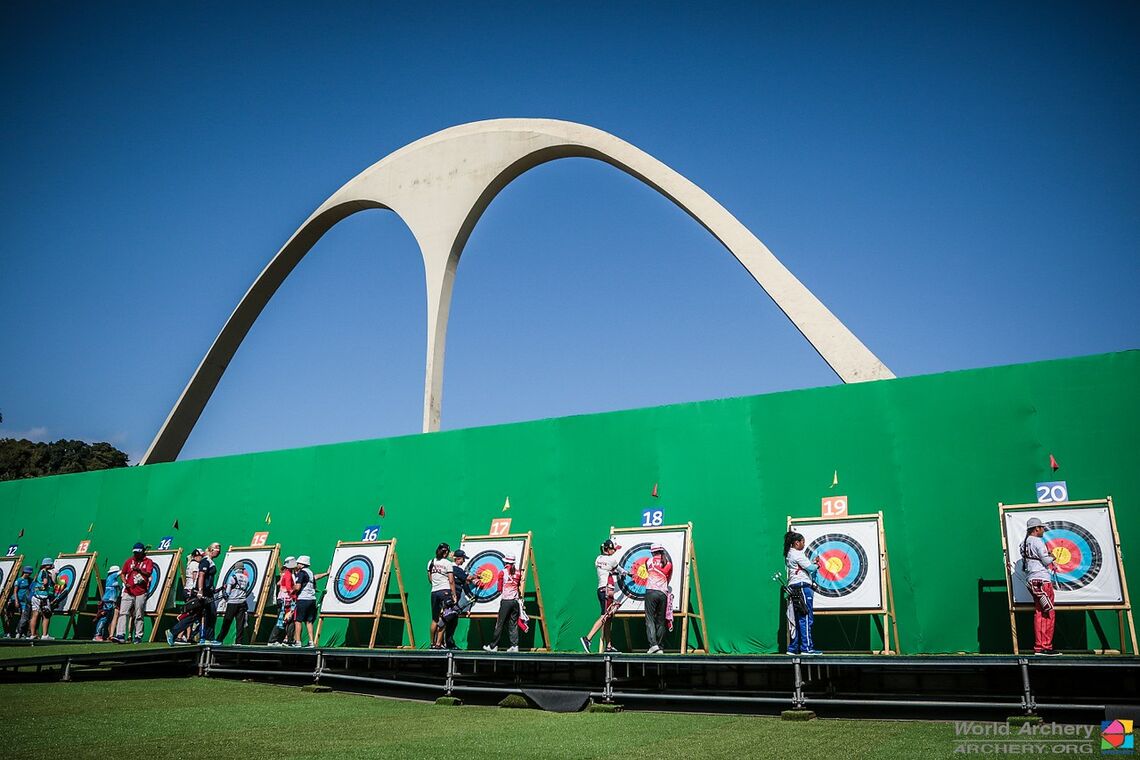
Official practice
- Date: 22 July
Each archer can shoot on their official target assignment for the qualifying round during official practice.
It’s actually not mandatory to shoot any arrows – though everyone will – but it is compulsory to attend equipment inspection, which is where all the archers’ gear is inspected to ensure it complies with the rules ahead of the competition.
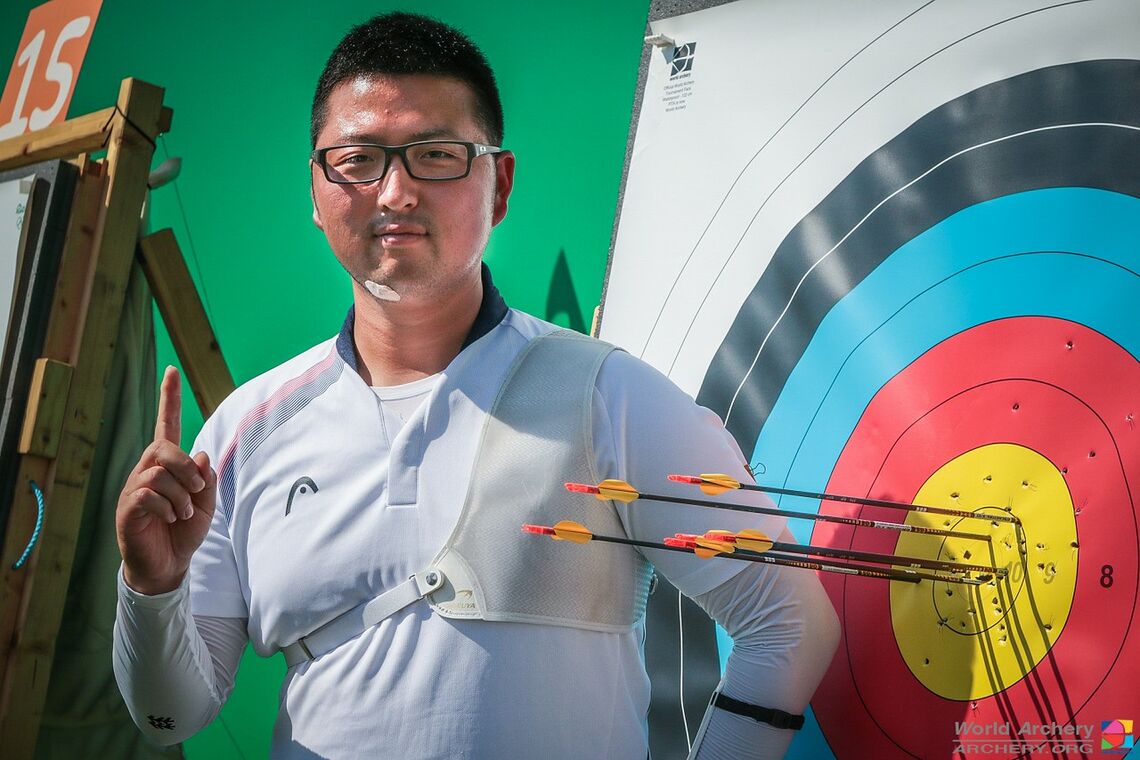
Qualifying
- Date: 23 July
This is also the day on which the Olympic Games officially begins. Qualifying runs in two sessions – morning for women and afternoon for men – before the opening ceremony in the evening.
Archers arrive at the venue around one hour before the start of the round and set-up, practice and scoring the 72 arrows takes around three hours. The women should be done by around 11h00 local time, the men by 15h00.
Which gender shoots in the morning and the afternoon swaps at each Olympics.
The men have had the better weather at the past two Games, resulting in two new world records – Im Dong Hyun’s 699 in London, and then Kim Woojin’s 700 in Rio. Perhaps it’s the women’s turn to benefit in Tokyo.
It only takes a few minutes at the end of the round to confirm the brackets. This is when archers find out who they’ll face in the eliminations.
The mixed team has added a wrinkle to the schedule, as there will be a cut to the top 16, which does not happen in the individual or team events, in which everyone advances to the eliminations. If any shoot-off is needed, it’ll happen first thing in the morning on mixed team day, which comes immediately after qualifying.
For any athlete who is not taking part in the team events, this is their last competition arrow for between four and six days.
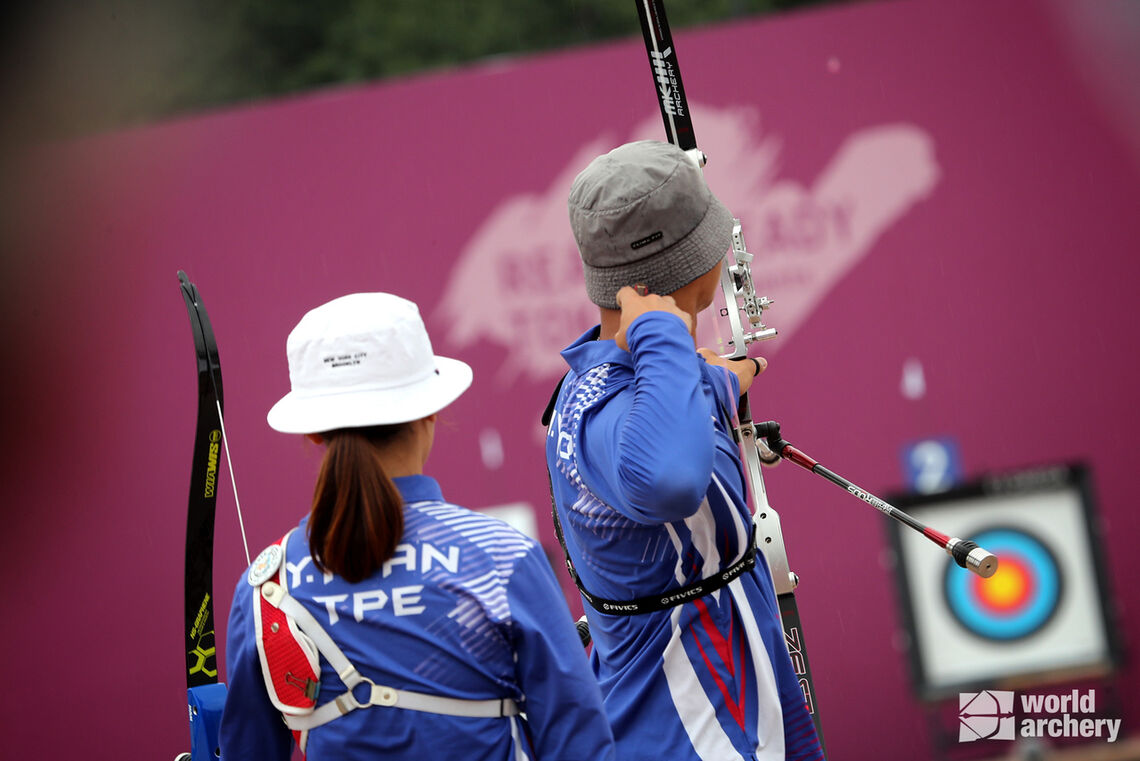
Team medals
- Dates: 24-26 July
Archery will award its first mixed team Olympic title on 23 July, followed by the women’s and then men’s team gold medals on the two subsequent days.
Athletes not competing in those competitions can use the training field.
Team days all take the same format. There’s a morning session of first-round matches (eight in the mixed team, four in the team events), and then an afternoon session of quarterfinals to finals.
There’s an official press conference for the teams on the podium as soon as each medal ceremony is complete.
It’s a fast-paced start to the event. After four days of official competition, three of the five titles will have been won.
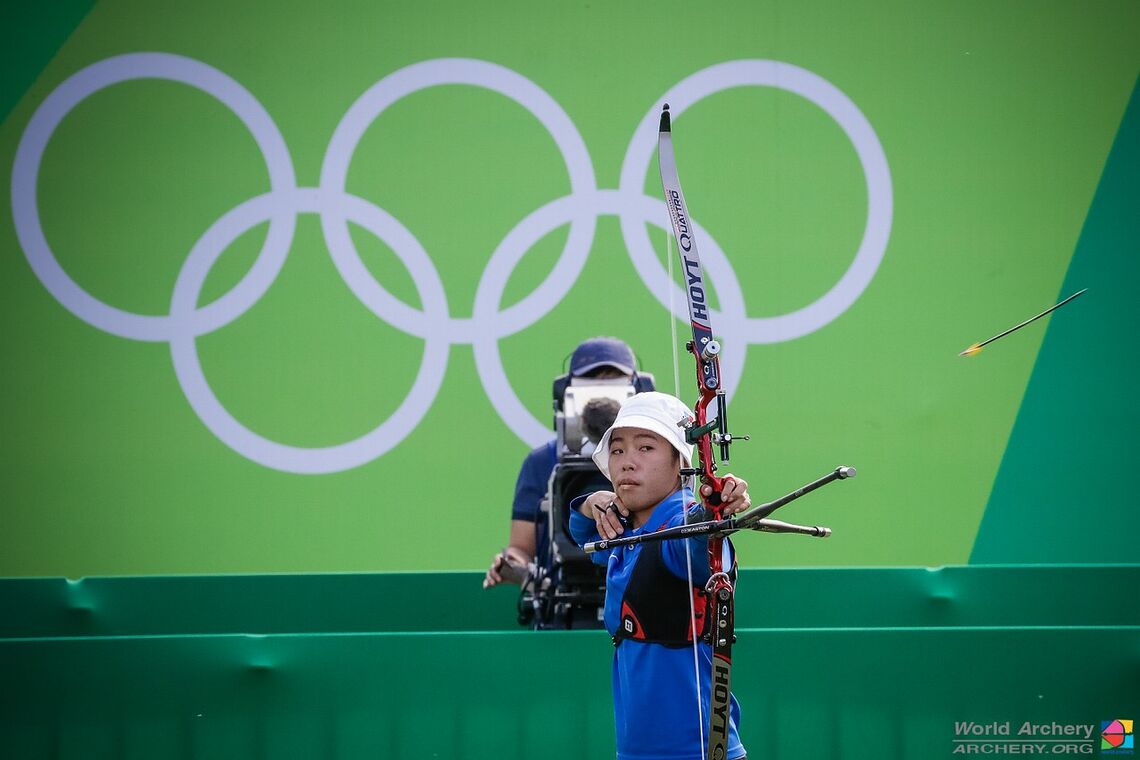
Individual eliminations
- Dates: 27-29 July
With the team medals decided, the Olympic archery competition moves its focus entirely to the individual events.
Every athlete in Tokyo takes part, no matter if they’ve qualified as a team or individually, and every single match, even the first round, takes place in the arena. (Unfortunately not in front of a crowd, though, this time.)
The goal is to make it through to finals day.
At some point over the middle three days of the Games, each archer will have been assigned a two-hour competition block, which contains a potential two matches – the first and second rounds.
Win both, and you’ve made the final 16. Lose, and the Olympics is over.
Exactly when this two-hour block takes place is decided by each archer’s seeding after the qualifying round. So it’s only when this is finished that athletes know when this all-important arena appearance will happen.
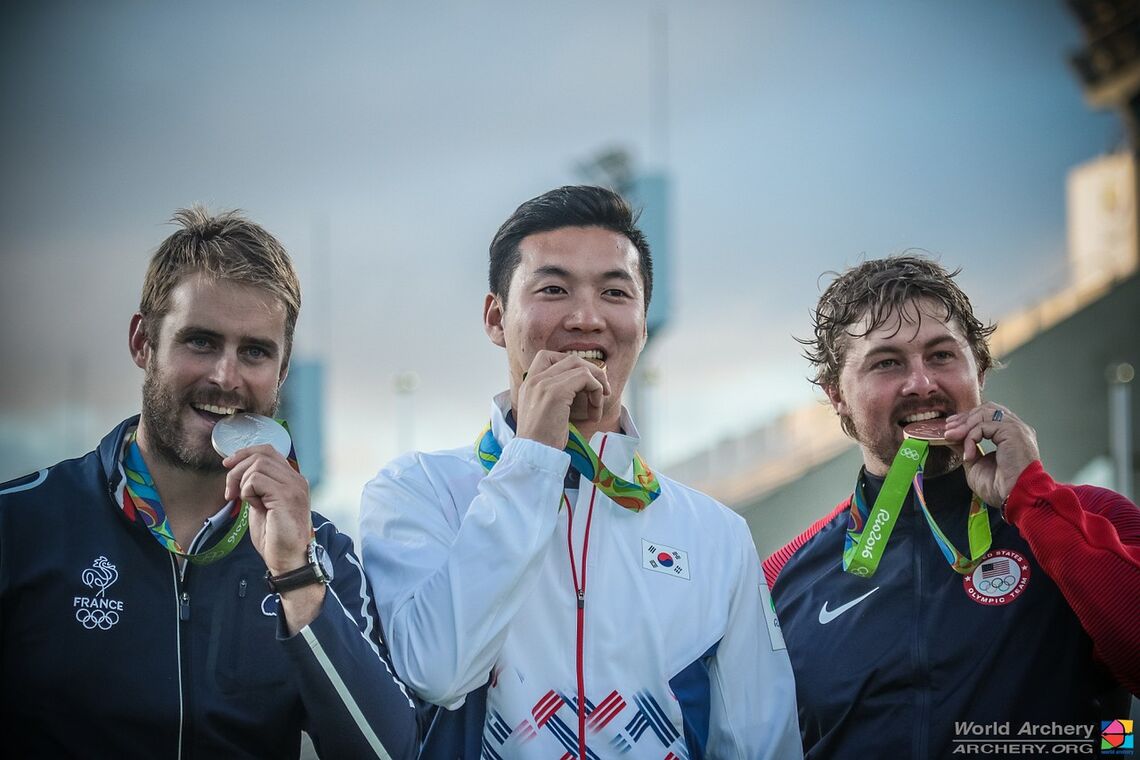
Olympic finals
- Dates: 30-31 July
The women’s competition concludes on the penultimate day of the event, 30 July, and the men’s is decided on the last day, 31 July. (The Olympics themselves continue for another week – but the archery tournament is over.)
On each of the finals days, there are, again, two sessions. In the morning, each archer shoots in a third-round match. By lunchtime, the field has been cut down to a final eight.
These eight archers then enter the arena in the afternoon to compete for the title of Olympic Champion. Any athlete still alive at the start of that final session can win the Games – and they only need to win three more matches to do so. (That’s quarterfinal, semifinal and final.)
The pace of the tournament increases so rapidly towards the end.
Over the first three days – or six sessions – of the individual events, an archer has just two matches. On the morning of finals day, they have one. And, if still undefeated and in the running for gold, there’s potentially another three in just one session. The smallest mistake at the wrong time can really spell disaster.
Once the titles are decided and the medals awarded, there are press conferences and the numerous media obligations that come with Olympic success.
Nine days after the competition began, all five Olympic Champion titles are won – and the archery competitions at Tokyo 2020 are done.
Archery schedule at Tokyo 2020 Olympic Games
- 18 July – training field opens
- 20-21 July – familiarisation (plus qualifying draw on 20 July)
- 22 July – official practice
- 23 July – qualifying
- 24 July – mixed team day (medal)
- 25 July – women’s team day (medal)
- 26 July – men’s team day (medal)
- 27-29 July – individual eliminations
- 30 July – women’s day (medal)
- 31 July – men’s day (medal)



